One of the concepts covered in the Eric Weinstein/kayfabe videos was how fake violence can spill over into reality. One of the goals of this newsletter is to highlight examples of “fake” things which have been impacting financial markets and the economy. One of the most fundamental examples has been institutionalized globally and had massive implications.
The Boskin Commission may not be something of which you have ever heard, but it has had a profound impact on global markets and the economy over the past three decades. As the link above shows, despite it being a seminal event, it hardly even registers a Wikipedia entry. Here is Eric Weinstein’s first-hand account - I have been aware of the Boskin Commission for 20 years, but he had a front row seat. The relevant section is only a few minutes and begins at about the 5 minute and 20-second mark:
But even prior to the Boskin Commission, we need to go back to 1987. The crash induced widespread panic and enough PTSD amongst people who had lived through, or grown up with parents who had, during the Great Depression. Alan Greenspan had recently been appointed the chairman of the Federal Reserve, replacing Paul Volcker in August 1987. That happened to coincide with the peak of what had been a prodigious financial market stretch, as stock prices moved higher in a persistent fashion off the August 1982 low of 770 in the Dow Jones Industrial Average.
The August 1987 peak of 2746 was followed by the infamous crash, where a low of 1616 was reached in October. Ironically, the US economy was not even entering recession and was in a relatively normal mid-cycle slowdown. The huge runup and crash in the stock market had been fueled to a significant degree by the recent explosion in leverage which came with the introduction and widespread adoption of financial futures.
One of the policies the Federal Reserve adopted during Volcker’s tenure to try and address the significant inflation problem which had developed in the 1970’s was to target credit growth. Effectively, Volcker decided to try and choke the life out of inflation by restricting credit and allowing markets to set the price of money - i.e. the level of short-term interest rates.
The result was short-term rates of over 20%, a deep recession, and long-term bond yields of over 15%, but also coincided with the end of double-digit inflation. Fast forward to the fall of 1987, and with a panic having enveloped the world, Greenspan reversed course and reverted to targeting interest rates rather than credit growth.
For the next decade, Greenspan became a devotee of Geoffrey Moore’s company, the Economic Cycle Research Institute, which focused upon leading economic indicators to forecast economic activity and inflation. Greenspan’s pre-emptive raising of interest rates in 1994, which contributed to a significant bond market bloodletting, may have been the only historic example of Federal Reserve policy actions that were proactive rather than reactive to market conditions. Greenspan was widely vilified and he would not make the same “mistake” again. His complicity would earn him the title “Maestro” from Wall Street and their acolytes in the financial media.
With official inflation statistics having been fundamentally changed under the cover of the Boskin Commission, something unsurprising occurred. Remember your basic Econ 101 class with supply and demand curves? When the price of something is set artificially low, what happens? Excess demand! Here is private sector credit as a percentage of GDP via the World Bank:
The “breakout” above 100% occurred in 1984-1985 when markets finally started to reprice real interest rates, after concern that the inflation boogeyman would return subsided. Real rates had remained stubbornly high even as inflation had dropped to below 5% in 1983.
Credit growth remained steady up until Greenspan capitulated in 1994, and coherent central bank policy may have gone the way of the Dodo bird at that time. The Boskin Commission soon followed, and credit growth exploded.
This is where the institutionalization of “fake” comes into the story. Contrary to equity markets, where there are many competing valuation methodologies such as Price to Earnings, Price to Sales, Price to Book, etc., the bond market has one unifying valuation methodology called the Fisher Equation. Surely the bond market and the so-called “vigilantes” would be smart and efficient enough to recognize the fake inflation data and price markets accordingly?
The nexus of the Federal Reserve using short-term interest rates as their primary policy tool along with the mutated inflation rate seems to have resulted in widespread delusion. Here is the core CPI:
Note how it was sticky around and below 2% following the Boskin Commission? This also coincided with the technology boom of the late 1990’s, which bolstered the hedonics adjustment portion of the new and improved CPI. While they may have targeted a 1.1% decline in reported inflation, per Weinstein, my guess is that it has ended up being 2 to 3% given the impact of hedonics having increased due to how much technology has taken its share in spending.
Note the impact on hedonics with how various things have been calculated within official inflation measures. According to the BLS, the cost of TV’s is down almost 100% since fake replaced reality.
Compare the core CPI chart with the Fed Funds rate over the relevant period. We can see the decline in response to the popping of the internet bubble of the late 1990’s, which was followed by the recession of 2001. Greenspan slowly tried to normalize rates to a reasonable degree, as the price-fixed rate below REAL inflation from 2001-2005 had stoked the housing bubble. Remember, price-fixing below equilibrium creates excess demand…Econ 101? Yeah, well our entire financial economy has deluded itself into ignoring the most basic law of economics.
What followed was the Global Financial Crisis, quantitative easing, and the private sector choking on the excess debt. Fear not kleptocrats, your federal government is here to save you!
As the private credit creation machine stalled, fiscal deficits exploded, with the resulting debt “monetized” via the Federal Reserves balance sheet via quantitative easing. However, go back to the inflation chart over the period and add 2% to keep it simple, then look at the Fed Funds rate chart again. Once again, an extended period of price-fixing the cost of money deeply in negative real rate territory.
However, it has not been just the front end of the term structure of interest rates impacted by the Fed’s price-fixing based upon “fake”:
10-year US Treasury yields have likely been below reality-based inflation for most of the period following 2008.
We’ve been living in a sort of fake financial and economic “reality” for 25 years, with the gap between the two opening up like alligator jaws. It’s been institutionalized and though shalt not speak of actual reality. Better to see living standards of most people collapse, political populism explode, and wealth inequality reach levels which may have made even John D. Rockefeller blush?



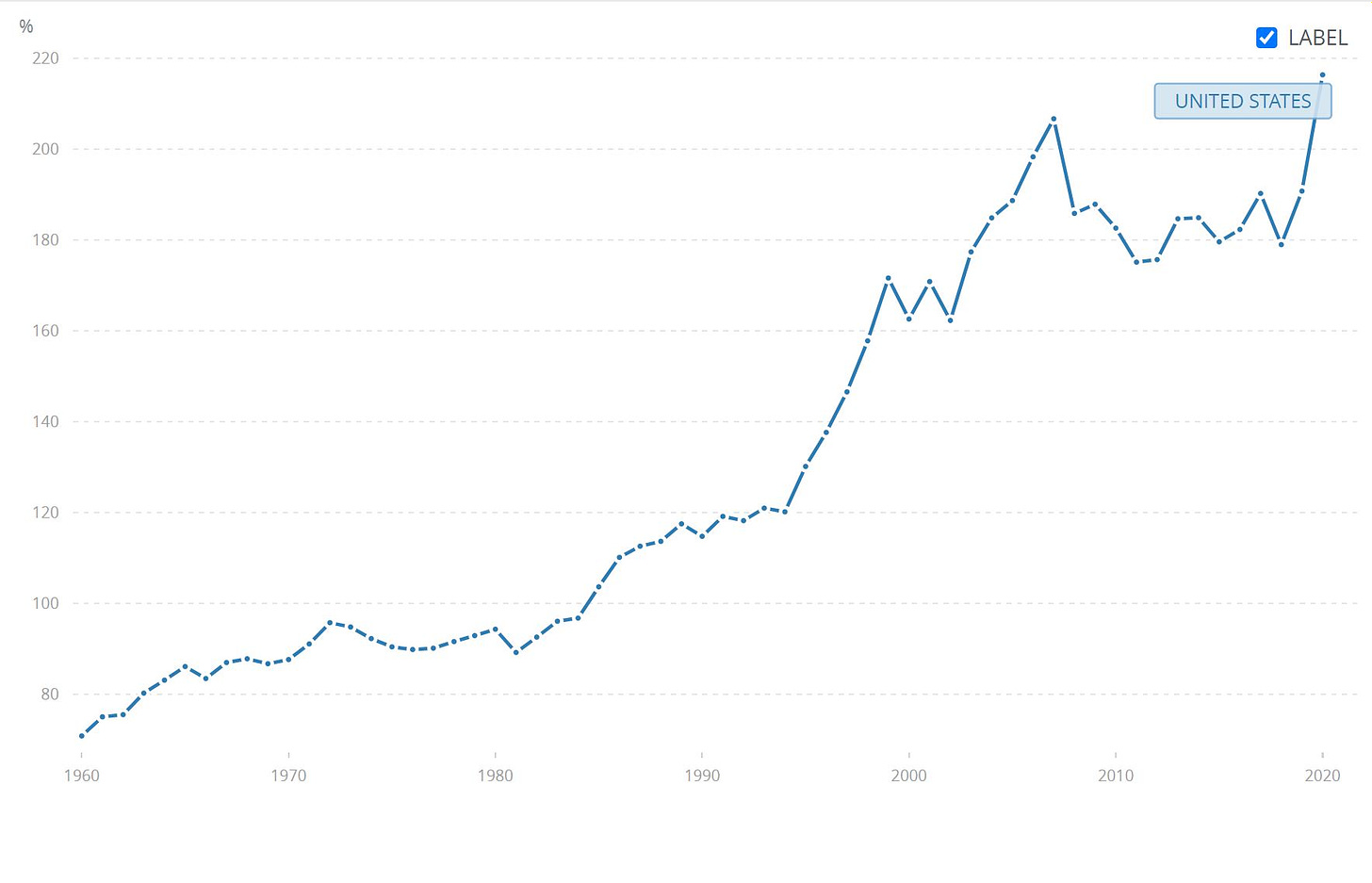
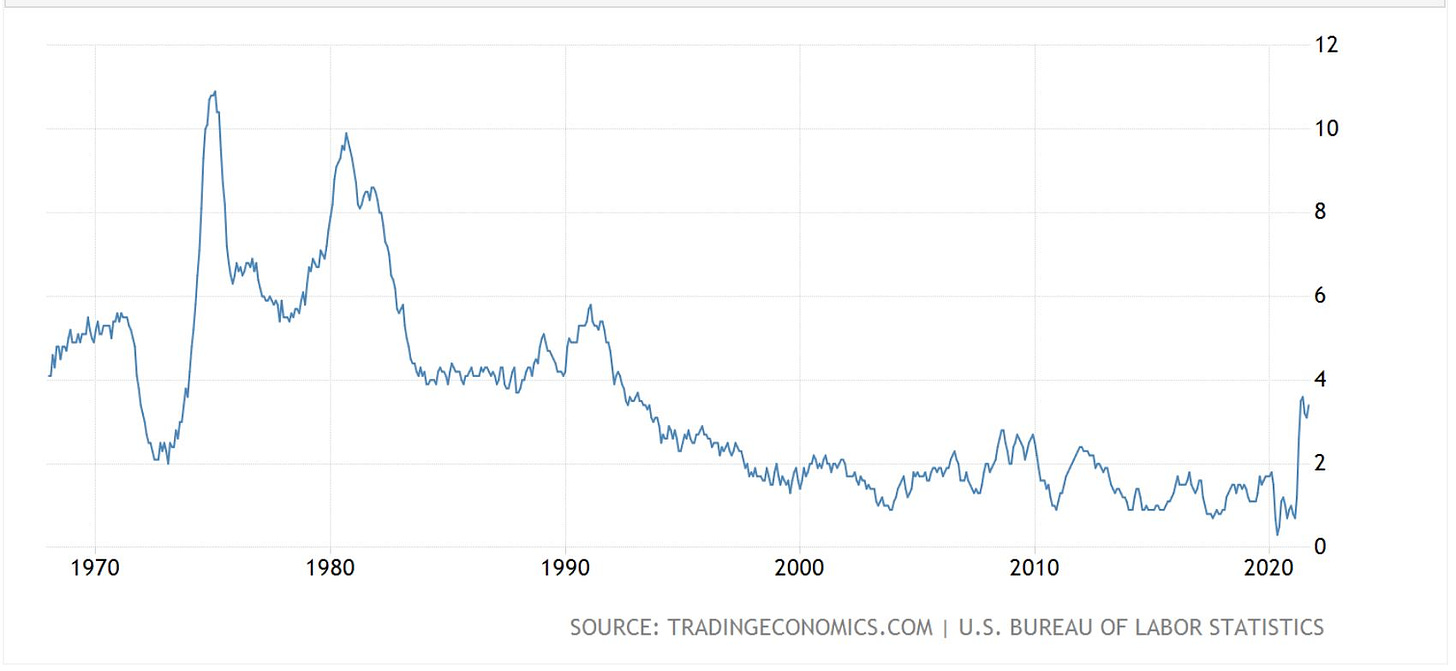

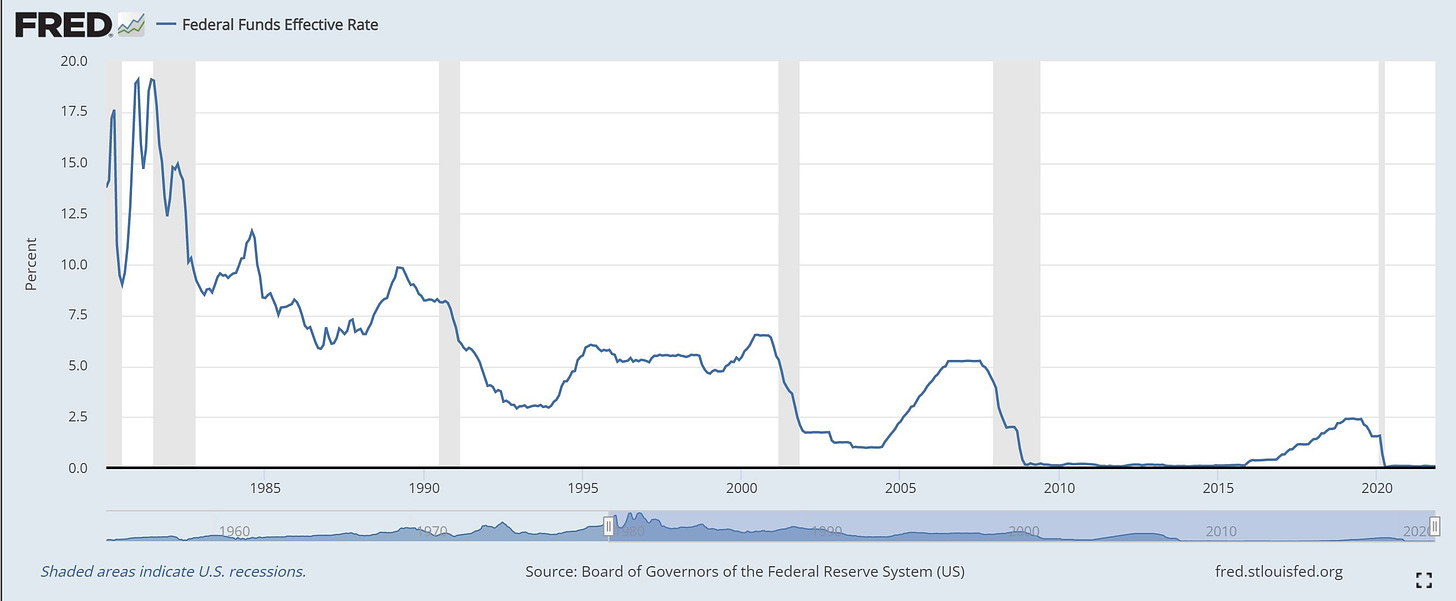
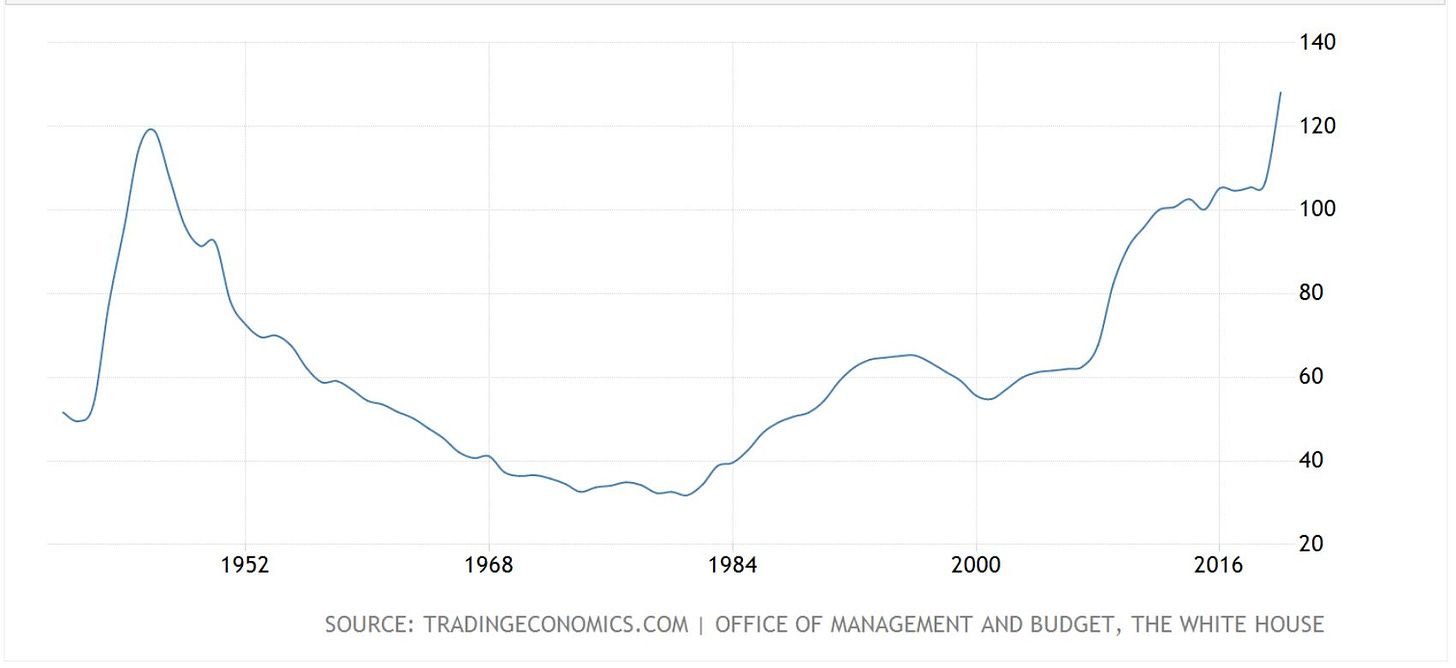
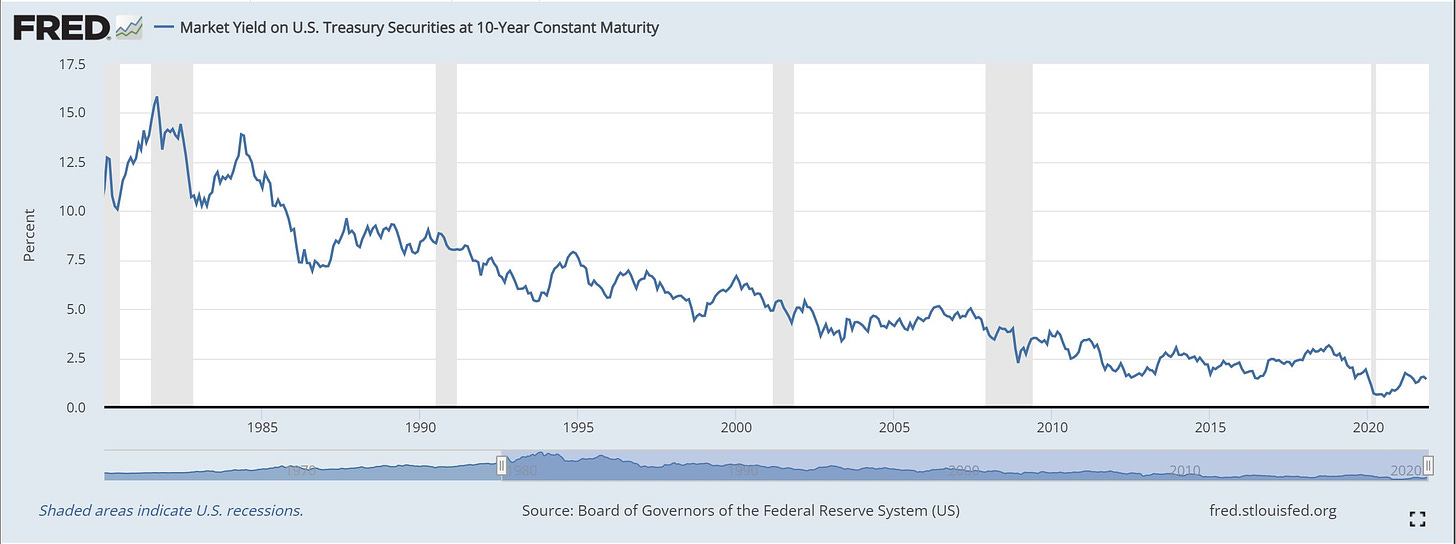
Thank you for the great content. I find it very enlightening and also entertaining. I have purchased a few of the books you recommended and watched the YouTube videos also.
I just watched a Ted Talk by Eric Bischoff and he explained how politics, professional wrestling and the media don’t want you to think they want you to feel. I think the markets are very much like that now, because Mr. Market doesn’t want you to think he wants you to feel the fear of missing out even though it seems the economy is about to fall of the cliff. CNBC does this too when they bring on Tom Lee and Scott Wapner criticizes him about his outlandish and highly improbable price targets for the S&P 500 knowing that the bears will feel rather than think.
Thanks for giving me a framework to better understand markets, politics, and professional wrestling.
It seems like things really started to get out of control when the dollar was de-pegged from gold in 1971, there's a bunch of charts here illustrating the point: https://wtfhappenedin1971.com/